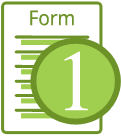April 15, 2011 (Jeff Alan)

Foreclosure filings decreased by 15 percent in the first quarter of 2011, but the looming shadow inventory and the probability of increased foreclosure activity in the future as lenders and servicers begin to work their way through the backlog of foreclosures that have been delayed by the “robo-signing” controversy, threaten an already weak housing market according a report released by RealtyTrac.
In its U.S. Foreclosure Market Report™ for the first quarter of 2011, RealtyTrac reports foreclosure filings, default notices, scheduled auctions, and bank repossessions, were reported on 681,153 U. S. properties. The report shows one in every 191 housing units received a foreclosure filing during the quarter which was down 15 percent from the previous quarter and down 27 percent from the first quarter of 2010
“The nation’s housing market continued to languish in the first quarter, even as foreclosure activity fell to a three-year low,” said James J. Saccacio, chief executive officer of RealtyTrac. “Weak demand, declining home prices and the lack of credit availability are weighing heavily on the market, which is still facing the dual threat of a looming shadow inventory of distressed properties and the probability that foreclosure activity will begin to increase again as lenders and servicers gradually work their way through the backlog of thousands of foreclosures that have been delayed due to improperly processed paperwork.”
Nevada continued to have the nation’s highest foreclosure rate with one in every 35 housing units receiving a foreclosure filing. In March, the state’s foreclosure activity increased 35 percent from February after two straight months of declines.
Arizona had the second highest foreclosure filings with one in every 60 housing units receiving a foreclosure filing. California was third, with one in 80 housing units receiving a foreclosure filing. First quarter bank repossessions in California increased 17 percent from the previous quarter and default notices in March were 28 percent higher than February.
Rounding out the top five were Utah with one in 98 housing units receiving a foreclosure filing and Idaho, where one in every 106 housing units received a foreclosure filing.
Based on activity totals, California had the most foreclosure filings for the quarter with 168,543 filings, which accounted for nearly 25 percent of all foreclosure activity in the United States.
Florida was second with 58,322 housing units receiving a foreclosure filing, followed by Arizona with 46,047 filings, Georgia with 37,509 filings, and Michigan with 37,506 foreclosure filings.
The reported noted that generally states with judicial foreclosure laws accounted for the largest quarterly and annual decreases of foreclosure filings in the quarter citing processing delays associated with the judicial foreclosure process.
States that use the judicial foreclosure process like Florida and Massachusetts saw foreclosure activity decline by 47 and 46 percent respectively.
For metropolitan areas, Las Vegas continued to have the highest foreclosure rate in the country with one in every 31 housing units receiving a foreclosure filing. Las Vegas was followed by Modesto (one in every 46 housing units), Stockton (one in every 47 housing units, Phoenix (one in every 48 housing units), and Vallejo (one in every 48 housing units).
California cities dominated the top 20 list with 11 cities on the list.
You can view the whole report here.
Tags: RealtyTrac, foreclosure filings, foreclosure activity, declining home prices, lack of credit availability, default notices, scheduled auctions, bank repossessions




